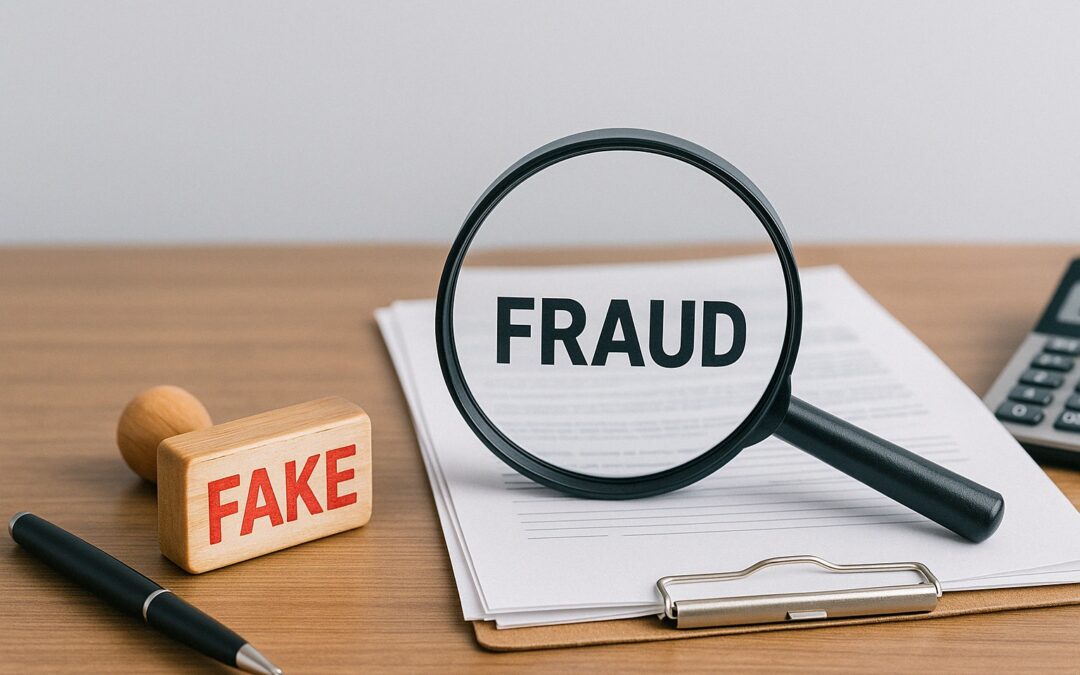In today’s fast-moving digital landscape, business lending is not just about evaluating numbers — it’s also about verifying authenticity. One of the growing concerns in SME financing is the use of fraudulent documents, especially when borrowers submit doctored files to secure higher loan amounts or qualify for funding they would otherwise not receive.
Commonly forged documents include bank statements, Notice of Assessments (NOAs) from IRAS, and financial statements. These fraudulent submissions not only expose lenders to default risk, but also undermine the credibility of the borrower and may result in legal consequences.
This article explores how document fraud is typically carried out, how lenders can detect it, and how businesses can protect themselves by maintaining clean, verifiable records.
Commonly Forged Documents in Lending
Here are the most commonly manipulated files used in business loan applications:
1. Bank Statements
Applicants may:
- Edit balances or transaction details using PDF editors
- Add or remove entries to inflate income or hide liabilities
- Submit only selected months while omitting recent downturns
2. Notice of Assessment (NOA) from IRAS
Borrowers may:
- Alter the income amount to appear more creditworthy
- Change assessment years or tax reference numbers
- Use another person’s NOA or an outdated version
3. Financial Statements
Especially for sole proprietors and small companies, some may:
- Create unaudited documents using generic templates
- Present outdated or fabricated profit and loss accounts
- Modify the file name or metadata to mask changes
How to Detect Fraud Using Digital Clues
Thankfully, technology can be used to detect document fraud — especially if you’re trained to look for the right signs. Two effective methods involve metadata review and checking for searchable content.
1. Check the PDF Metadata
Every digitally-generated PDF contains metadata — information about when and how the file was created, and sometimes by whom.
Red flags in metadata include:
- Recently created files claiming to be from past dates (e.g., an NOA supposedly from 2022 but created in April 2025)
- Author fields showing unfamiliar or suspicious names
- Modification dates that don’t align with official issuance timelines
How to check:
- On Windows: Right-click the file → Properties → Details
- Using PDF readers like Adobe Acrobat: File → Properties → Description
2. Searchability Test
Genuine documents downloaded from banks, IRAS, or accounting software are typically searchable PDFs — you can highlight or copy the text.
Fraudsters often:
- Scan printed documents and edit them using image editors
- Save the manipulated versions as non-searchable PDFs
- Submit screenshots saved as PDFs to avoid scrutiny
Simple check: Open the PDF and try using Ctrl+F (Find) to search for a word. If nothing is found, the document is likely an image — which could be manipulated.
Other Red Flags to Watch For
- Fonts or alignment inconsistencies
- Blurry logos or uneven margins
- Bank logos that don’t match the current branding
- NOAs with incorrect tax reference formats
- Statements with no running balance or inconsistent transaction dates
- Files with unusually large or small sizes (e.g., a one-page NOA being 10MB)
How to Deter Document Fraud
If you’re a lender, consultant, or even a borrower submitting your documents, transparency is key. Here’s how to keep things secure:
- Request Original Downloads: Ask for the original download directly from IRAS or bank platforms (e.g. in .PDF format from source, not screenshots).
- Verify with Issuers: For high-risk cases, verify submitted documents with the issuing authority (e.g. IRAS, banks, auditors).
- Train Staff to Recognise Signs: Equip analysts and relationship managers with training on how to spot anomalies using file properties and digital tools.
Final Thoughts
Document fraud in business lending is becoming more sophisticated — but so are the tools to detect it. By combining a sharp eye with digital verification techniques, lenders can protect themselves from unnecessary risk and borrowers can build credibility through transparency.
At CapitalGuru, we verify all documents with a strict screening process before structuring a deal. Our goal is to create trust, reduce risk, and deliver funding with clarity.
If you’re unsure whether a file you’ve received (or sent) is reliable, speak to our team — we’re here to help you make informed decisions.

